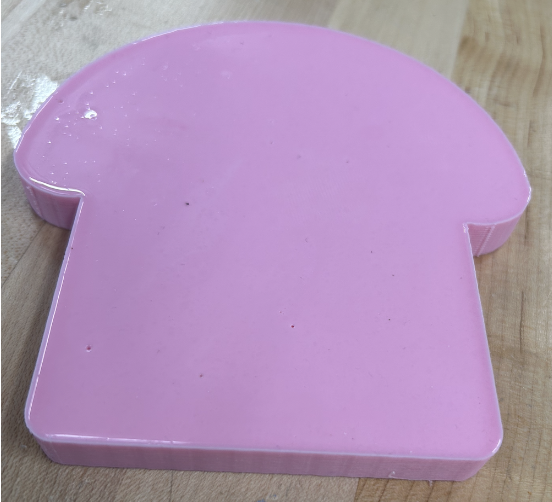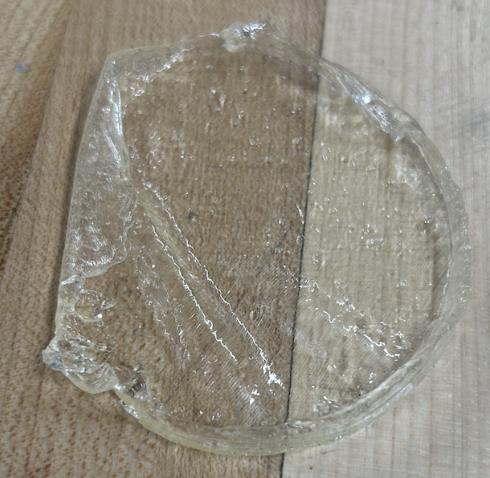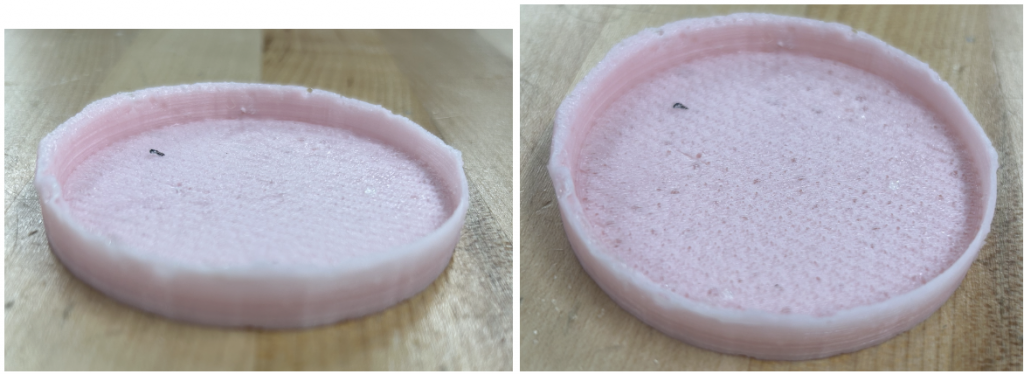For this molding homework, we decided to make a piece of bread that we can use as a prop for our Design Review 3 and also a base for the plastic tubing (that we are using to prototype the test tube/removable compartment in our thermos design).
Caroline made the 1 piece mold used for the bread. She used Solidworks to make the stl file and then printed the mold using a 3D printer in Nolop.

This is the bread mold
Anna and Sanjana then casted the bread using Mold Max 30.

This is what the bread looks like
Sanjana made the two-piece mold used to make the base of the test tube/removable compartment in our thermos design. She used Solidworks to make the stl file and then printed the mold using a 3D printer in Nolop.

Anna and Sanjana originally casted the base using Gelatin/Glycerol Hydrogel. However, the desired thickness of the base was really thin, so the finished casting didn’t hold well.

This is what the base made with Gelatin/Glycerol Hydrogel looked like
As a result, Meira and Sanjana re-did this casting by using Smooth Sil in this two-piece mold.
The finished product turned out better since the silicon was sturdier than the Gelatin/Glycerol Hydrogel material.

This is what the finished base made with Smooth Sil looks like